 The 2017 Skylight group's focus week in Reggio Emilia was now two weeks ago, and the group are now finding their feet again after a very intense study with our Reggiane colleagues.
The 2017 Skylight group's focus week in Reggio Emilia was now two weeks ago, and the group are now finding their feet again after a very intense study with our Reggiane colleagues.
This group, for educators in settings who have been to Reggio before, are working positively on their professional practice and want the opportunity to enable themselves and their settings to become more skilful and courageous in their work of creating a listening pedagogy.
We're now into our third and 'what's next?' phase, working in individual setting, but with new shared understandings and intents on how we construct our classrooms, listen to our children's ideas and offer appropriate challenges.
If you are interested in joining a new Skylight group, do get in touch to register your interest. On Wed 5th December 2017 we're hosting an Erasmus funding session for applicants, and this is a tight deadline - email the office (
Would you like to read more about the week? Christine Merrick has written a daily diary of our week in Reggio ... read on:
"It is difficult to sum up a week in which so much was experienced, so many connections forged and thinking generated but I'm sure so many people will be interested so I'm going to try! The Skylight group consisted of people who have visited Reggio before and are actively engaged with the principles and ideas in their own settings. There were twenty-four participants in all, some from maintained nurseries in the UK, some from other sectors, others were from International Schools as far apart as Norway, Japan, and Africa.
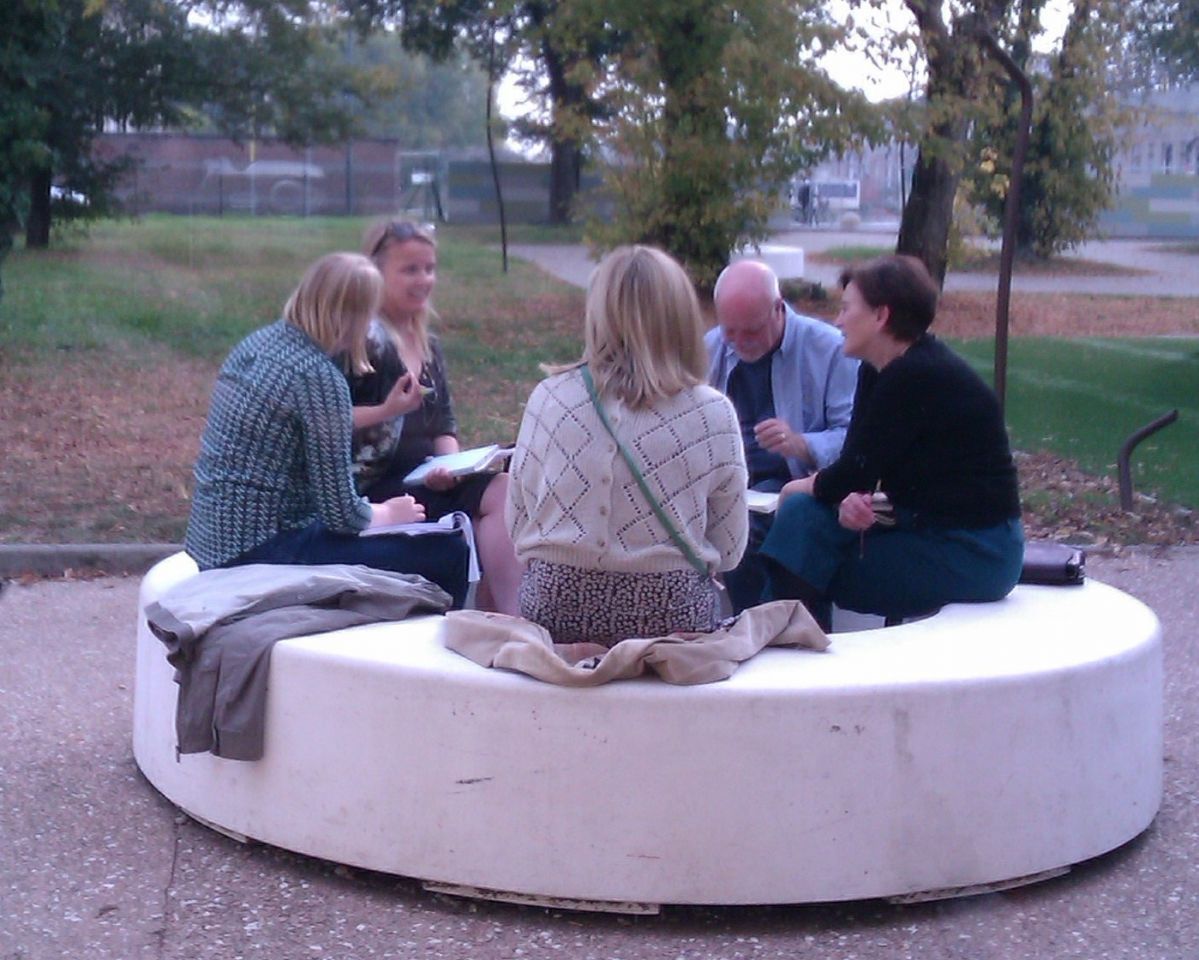
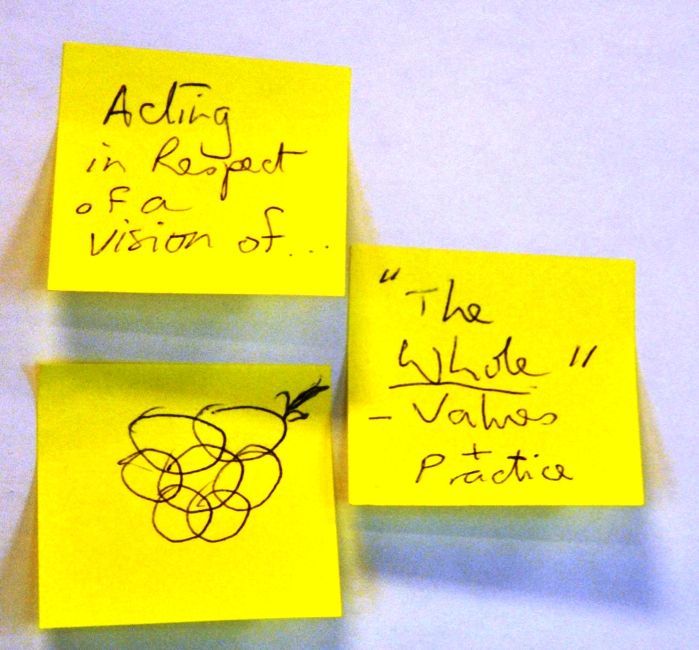 Having met through Skype meetings prior to the visit we began the week on the Sunday by gathering together for our first face to face meeting. We shared our major themes and questions and began the process of getting to know each other. Over the five days that followed we had fascinating presentations from atelieristas and pedagogistas from Reggio Emilia, as well as having a wonderful experience in the atelier of clay at the Loris Malaguzzi Centre, visits to a nido, pre-school and the primary school and a cultural visit to the Cervi museum. What follows is a flavour of that rich and exciting week.
Having met through Skype meetings prior to the visit we began the week on the Sunday by gathering together for our first face to face meeting. We shared our major themes and questions and began the process of getting to know each other. Over the five days that followed we had fascinating presentations from atelieristas and pedagogistas from Reggio Emilia, as well as having a wonderful experience in the atelier of clay at the Loris Malaguzzi Centre, visits to a nido, pre-school and the primary school and a cultural visit to the Cervi museum. What follows is a flavour of that rich and exciting week.
Moira Nicolosi began the first presentation recapping the values of the educational project in Reggio Emilia. She highlighted the continuity that now flows from the nidos serving the youngest children, through the pre-schools to the primary aged children as those involve share philosophies and ways of working rooted in values such as citizenship and images of the child as competent capable learning in connection and relation to others. She also acknowledged the new challenges and fields of research striving for such continuity had brought. Moira saw the Loris Malaguzzi Centre as a metaphor, a synthesis of the approach, a place for dialogue, encounter and a place of meeting for all cultures. The image of the school as a place for participation and learning for everyone, children, families and staff was important and the environment being a place that participates in the relationships that take place there, a place that interacts with the construction of knowledge and is conducive to learning..
When talking about intelligence Moira suggested that it isn't confined in the minds of the individual but distributed between people, spaces and materials. Learning is a constructive act taking place in the context of relations and is not a linear process but informed by the reciprocity of others, both people and things. The 100 languages are a metaphor for the potentiality of children and all the possibilities of knowing.
She talked of the culture of the atelier where school was not a place where an adult teaches and children to learn but a dynamic place with adults and children learning together and from one another. Such a school is sustained through relationships, communication and listening and the way this is put into practice is through observation, interpretation, documentation and the designing work that is known as progettazione. There is no proposal of adult certainty but one a recognition of knowledge, theories and ideas that are inevitably partial. As such there is a need for adults with a researching attitude, researching the meaning of learning and knowledge.
After this introduction Marina Mori offered us some documentation to consider. The first was a two minute video of a twenty one month old child exploring sound with a beater and symbol. We were challenged to consider what contexts we offer if we believe all children are born intelligent and creative, why we offer these contexts and what the possibilities might be. WE were also encouraged to think about how that context was offered, how we equip ourselves and what questions might be generated. The second piece of documentation related to children learning about number which emphasized that procedures used in counting are both tools for knowing the world and things to be known themselves as knowing the rules, characteristics and functions are important for children's reasoning about the world. In the video children described their experiences to others, use many methods to work out what was before them and support each other in their struggle to understand. Marina emphasized the need for the teacher in this cases to know about numbers and the evolution of the children's development in the discipline as well as their general development because without hooks to hang things on you can't understand what is being seen. 'We can only see what we know'.
So much for the first morning, already lots to think about! In the afternoon Moira presented on the value of organization in preparation for our first visit of the week to the NIdo Sole. Although each setting has its own identity and history they share the image of the child and the concepts of learning as well as specific times for professional growth and the development of professional research projects. She highlighted the importance of all those involved, teachers, cleaners, cooks, atelieristas. All of these are important to the pedagogical project and the presence of the atelier and the kitchens have, at times been challenged on economic grounds. In times of crisis, she conceded, there are always discussions of what you need or want, especially with early years provision. At times like these pedagogy and politics often go hand in hand. Time for professional development was underlined because professional growth is both a right and a responsibility. The care and quality of the environment, understood as intelligent and welcoming, the participation of families who are part of the decision making process and contribute to the definition of city policies through the City Childhood Councils are political and pedagogical decisions. She urged us to have strong and resilient arguments to defend our choices. Perhaps this was one of the key messages of the day. Those concepts and ideas were then made real in our visit to the Nido. We were able to see documentation that gave voice to the experience, to discuss specific questions with the staff. A perfect end to an extremely full day!
Day 2
Our second day began with a morning that focused on documentation and assessment. Documentation was described as a 'way of keeping alive the possibility of re-reading and analyzing what we have done with others. It is'a strategy for making visible', giving value to what happens between the individuals in the group and leading to the development of the capacity for reflective and metacognitive competences in both children and adults.
Peer Moss joined the group via Skype to talk about these languages of evaluation and the need for multiple ways of evaluating practice that are commensurate with ways of working. He discussed the nature of suchevaluation languages in relation to Reggio Emilia and the risk of incommensurate methodologies, citing the OECD's proposed comparative evaluation of five year olds as part of a 'pedagogy of compliance'. In contrast documentation provides an opportunity for visibility and meaning making in democratic relationships with evaluation focusing on values and being essentially ethical in its nature. There was much in Peter's presentation that resonated with us. Peter urged us to hang in there until the current system of evaluation, based on a language of managerial accounting, quantification, objectivity and ratings, collapsed. However, we do need to have developed alternatives, we need to be ready with concrete examples and worked out ideas made visible! Meanwhile we continue to walk, as Gunilla Dahlberg said at a Sightlines gathering last year "on two legs". (We hope to publish his contribution as a Diary item - ed.)
Whilst Peter's contribution was daunting, colleagues from Reggio Emilia sustained our resolve,emphasizing that conditions do exist for a different gaze on evaluation, a different gaze on humanity. We need to focus on collaboration. It is difficult to measure innovation, a dynamic approach in a system that is in relation to society, through numerical means, but documentation offers us a way through to a more qualitative approach. We need to become 'part of' rather than 'subject to' evaluation through shared acts of interpretation. The selection of documentation makes it an open-ended journey, a collection of what we have grasped, partial but open to multiple perspectives. It has evaluation potential for children, teachers, parents, providing a view of childhood and feeding the debate about the nature of childhood. In this way the school becomes a place for debate about education and systems which can lead to change in that system. AS an example of this we looked again at the Ring- Around- the Rosy documentation, some of which can be found in Vea Vecchi's chapter "The Curiosity to Understand" in 'Making learning Visible' (R.eggio Children, 2001)
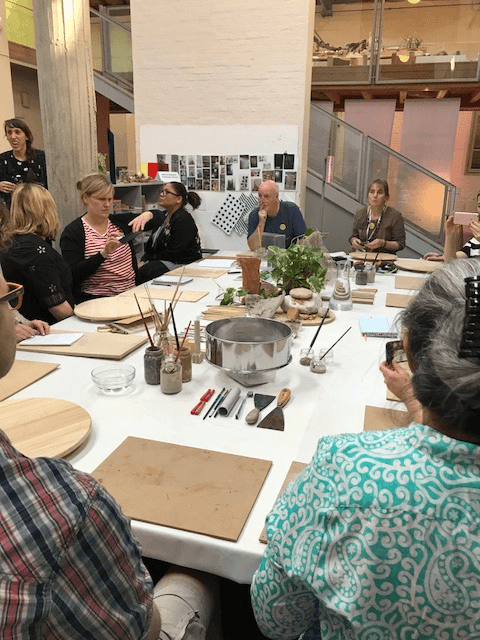 After the intensity of the morning the afternoon offered us a truly wonderful experience in the ateliers of the Loris
After the intensity of the morning the afternoon offered us a truly wonderful experience in the ateliers of the Loris  Malaguzzi Centre. We were able to visit the atelier of light, browse the arrangements of materials and, ultimately, to explore our own understandings of clay as a material in the Atelier of clay. An afternoon perhaps best shown in pictures!
Malaguzzi Centre. We were able to visit the atelier of light, browse the arrangements of materials and, ultimately, to explore our own understandings of clay as a material in the Atelier of clay. An afternoon perhaps best shown in pictures!
Day 3
The morning of the third day was spent in the Preschool and Primary school at the Loris Malaguzzi Centre. We were allowed to wander through the building spending time observing whatever caught our interest. For me it was the atelierista working with a group of four year olds on clay possibly because we had worked on clay during the previous afternoon and it was fascinating to watch the same process with these young children. Other people joined groups of children reading, spent time with the oldest children exploring and investigating science topics. In the entrance to all the settings is a statement relating to the rights of children, in the primary school at the Loris Malaguzzi Centre it reads:
'The journey into the rights continues with the hope to be able to contribute together – adults and children with different responsibilities – to the construction of the school, a city, ideally he world, inhabited by the rights of all living creatures"
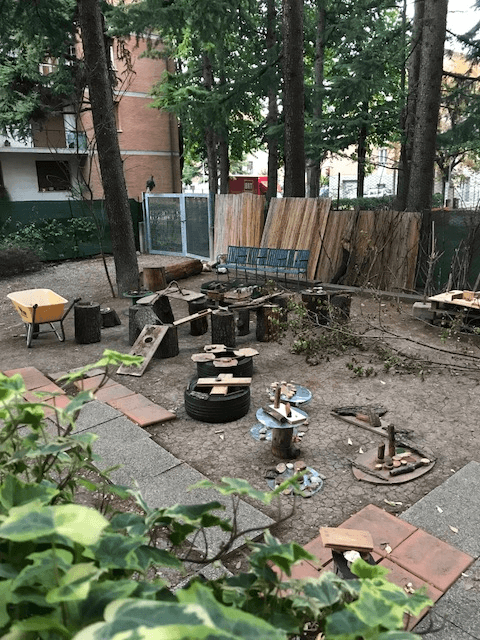 Bruno Munari Preschool - in a block of flats in Reggio cityWe discussed design on many levels - of pedagogy, built environment, communications. 'Children, Spaces, Relations' by Reggio Children and Domus Academy discusses the interplay between architecture and pedagogy in Reggio. An underlying thread was consideration of the interconnectedness of all the 'players', children parents educators, the city:
Bruno Munari Preschool - in a block of flats in Reggio cityWe discussed design on many levels - of pedagogy, built environment, communications. 'Children, Spaces, Relations' by Reggio Children and Domus Academy discusses the interplay between architecture and pedagogy in Reggio. An underlying thread was consideration of the interconnectedness of all the 'players', children parents educators, the city:
"The school does not have one area dedicated to the preschool and another for the primary school. Instead there is osmosis and proximity between spaces inhabited by children of different ages. This makes it possible to have work threading through the school and shared times for the children, and facilitates exchange and daily educational design work between adults. It is a hierarchical space, in which children and adults collaborate, a space where democracy is acted out."
The afternoon session was led by Moira NIcolosi and entitled "Thinking by design". The title refers to the design work undertaken by the adults in the schools, the adoption of research as an attitude of life which permeates the work in Reggio Emilia. Moira suggested that whilst research was fundamental to the quality of education, it was not the same as academic research but a strategy for preparing learning contexts and contexts for professional growth. The process of observing, documenting and reflecting was a spiraling process. She referred to it as a simple, intuitive design reflecting the normal processes in life such as planning a journey. 'All the projects in our life are part of designing our life as we go along". She discussed the nature of projects in more detail, the nature of 'projecting', including everything you would like to do and bringing these into relationship, making connections and the need for expectations, a sense of the possibilities that are open to us. She described it as "setting out on an open-ended journey that may need modification, stops and pauses along the way." She described a number of pre-requisites that adults needed on this journey:
- teachers have knowledge of children's psychological development
- They have knowledge of subject disciplines and their languages
- They have cultural knowledge of the subject matter under investigation.
To illustrate her discussion she described a digital project undertaken across the Reggio Emilia settings in which settings looked at the relationship between the natural and the digital. The project began with lots of outdoor encounters, becoming immersed in nature and observing the children. Moira then outlined how the project "A shining Hug" developed over a period of a year in a preschool that focused on an ash tree in the grounds of the school. She talked of the importance of finding the 'threads that the children hang their learning on' and described how traces of a previous project around the tree were picked up by the children. The children took photos and the adults listened to their conversations picking up significant words such as "the sky embraces the tree", " a hug without hands" "it becomes a shining hug". The daily diary shares what children have been doing and at a first meeting in November the adults discussed the children thought and ideas, picking up possibilities for development. These possibilities provided the adults with the capacity to re-launch the project, to re-proposetheir work at a slightly higher level but not so high that the children could not connect with it. Teachers made selections and choices, she circulates ideas among the group promoting discussion and inviting expression of concepts which generate more discussions. A constant toing and froing between the digital and the analogue produced many varied representations from projections of the trees image that were enhanced and elaborated to a video of the creation of a painting.Perhaps the most memorable comment was about
"gifting time and space to yourselves and the children to think, talk, discuss, reflect; creating pause and suspension that is the place where the yeast does its work:
Another day with so much to think about, only one day left with the Reggio folk!
Day 4
The morning of the fourth day was spent along with an American/Israeligroup listening to Claudia Giudici, Consuelo Damasi and Sara De Poi talking about the different levels of documentation that recorded the project that became the DVD "The many faces of the assembly". The DVD can be bought through the Sightlines on line shop and shows video clips of the children working along with a short film bringing the project together. They recapped the many uses of documentation, making visible different perspectives on children's learning, documentation as a form of evaluation or self-evaluation, a tool for reflection trying to show the learning processes of the children and give voice to their perspectives.
However, the daily, immediate raw documentation that serves to drive the project has to be sieved and reinterpreted if it is to be re-presented as a strategy for discussion with colleagues in other settings and if the Reggio perspective is to be opened out for others around the world. In this way the relationship between the documentation process and the communication process is always important. The objective becomes making visible the adult and children's processes and communicating them to children, adults and the world at large. As a result there are different levels of communication
- on the walls of the setting, as semi permanent displays and as power point presentations for parents;
- in small booklets, such as the one given to each family at the end of the year in which the project took place;
- in different media
- as exhibitions and installations such as those to be seen in the Loris Malaguzzi Centre.
The documentation becomes the communication. 'The many faces of the assembly" is a study of the human figure in the context of communicating the nature of the children's morning assembly. Learning takes place over time as children move between photography, drawing and clay work and develop their understandings in the dialogue and relationship with others. We were treated to a detailed examination of the different stages of documentation and the different tools and formats used at different times.Sara De Poi talked about the different demands of different audiences and the tailoring of documentation to the purposes for which it is used. This was particularly important when considering a video which had to be a stand alone piece needing no adult explanation so two questions were important
- what do you want to say, what is the focus?
- Who are we saying it to?
- This represents a dual gaze, not only what do we want to say but also what do the audience want from it?
Decisions about the soundscape of the video, which words to use, which photographs, whether to reconstruct part of the work to tell the story more effectively, all had to be taken and addressed so that people could get closer to the essence of how the work happened. Form and content constantly intertwined around the unifying theme of learning in relation to others, learning with and through a language experienced in relation to others.
The last afternoon was focused on the concepts of participation and politics with Paula Cagliari. She began with the challenge that in many cases political decisions for children focus on the right/need to work for parents not on the rights of children – which immediately connected many of us with what she had to say. She told once again the story of Villa Cella, 'the epic school', self managed, built brick by brick as a new and different school for the children. From this starting point children began to be seen as having a right to more than 'being cared for'. They had rights as citizens of the community, rights to their own way of learning, and their ways of seeing the world to be respected. She talked of "The right for the poetry and science, reason and emotion to be kept together". The municipal preschools and toddler groups grew from these beginnings, a result of people mobilizing and local administration responding.
Paula challenged us with the question "How can schools become a place of culture?" She referred to Loris Malaguzzi's voracious appetite in encountering different cultures, different philosophies and the movement he created based on shared debate through which we discover the coherences and incoherences. Teachers are repositioned, no longer isolated, but set in a social context with colleagues, parents and society and children become aware of these changed relationships, feel the attention for the place they inhabit and the solidarity of those around them. In this way they learn new and different ways of being and feel that they count, not just for now but for the future. In this way the adults build the educational project of the preschool and sustain it through their use of documentation. Paula warned us that these dynamics can only be activated if you have a non-dominant view of the teacher, respect for the position of the parents and have an idea of the child that produces a shared culture. She described the work of the City Childhood Councils in involving parents and adults throughout the city in the dialogue about education.
Perhaps for us the most significant message she gave was that of making our work as early childhood educators, and children as capable citizens, visible. WE need to take away our anonymity because our invisibility allows administrators to ignore us.
We finished the day with a visit to the wonderful Munari preschool which is situated in part of an apartment building in a built up area of the city. It has a small outside area overlooked by other apartment blocks but which has been filled with natural materials and resources. We were given a wonderful welcome by the staff and we were able to spend some time looking at the children's work, the documentation and the fabulous environment created. So often people think of environments in Reggio Emilia constructed within large, open, modern architecture. At Munari we were able to feel the intimacy of different spaces and the creativity brought to bear converting spaces that are not purpose built.
Day 5
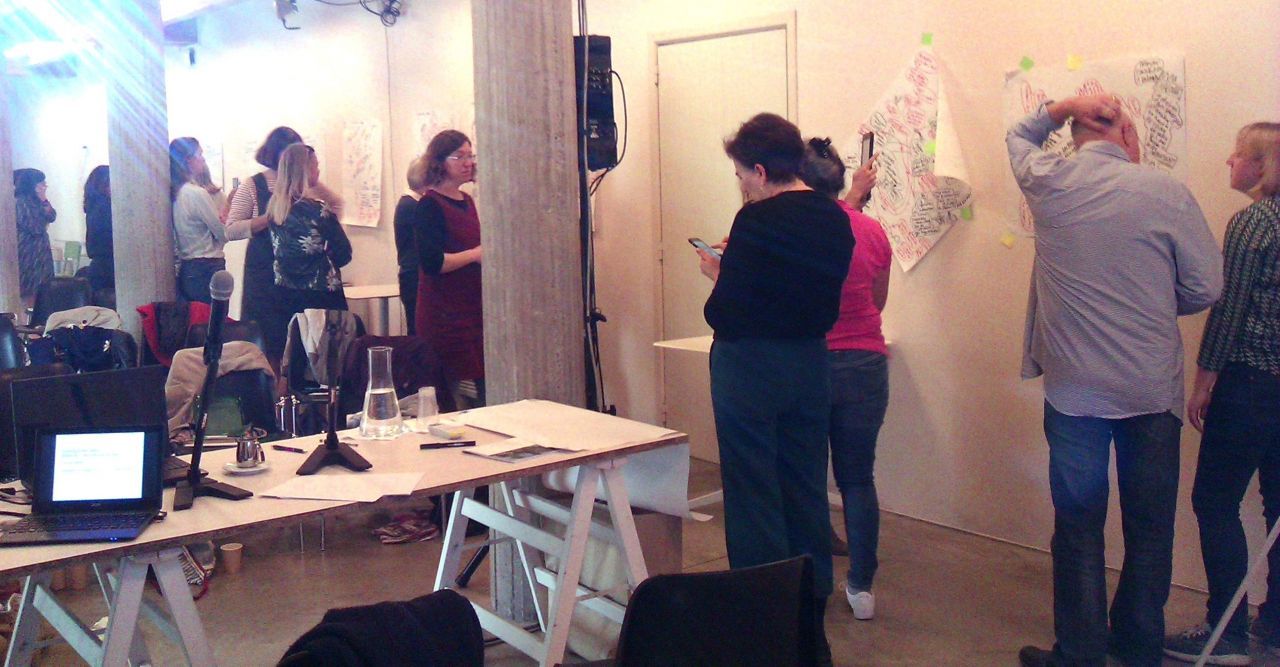
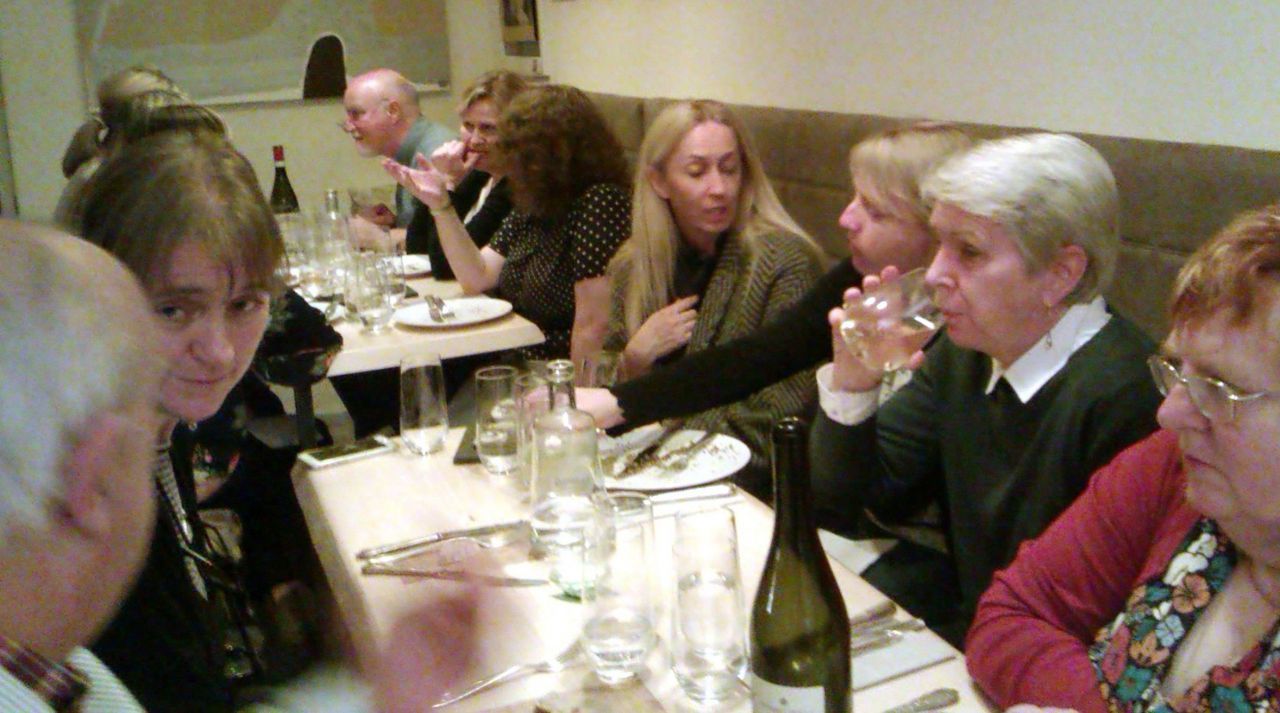 Our last day together was an opportunity for reflecting on all that we had heard. We considered the impact of the contexts we create, the need for high levels of trust if we are to develop the relationships needed within our settings and the political (small p!) contexts we work in. Revisiting and unpacking ideas we recognized is not easy and creates dissonance at times, but we need to persevere through that dissonance. There was so much we had to do! Initial plans were put in place and we agree that the power of the group should not be lost as we returned to our different homes. As a result connections are already continuing and our learning group remains strong.
Our last day together was an opportunity for reflecting on all that we had heard. We considered the impact of the contexts we create, the need for high levels of trust if we are to develop the relationships needed within our settings and the political (small p!) contexts we work in. Revisiting and unpacking ideas we recognized is not easy and creates dissonance at times, but we need to persevere through that dissonance. There was so much we had to do! Initial plans were put in place and we agree that the power of the group should not be lost as we returned to our different homes. As a result connections are already continuing and our learning group remains strong.
Christine Merrick. director, Sightlines Initiative

